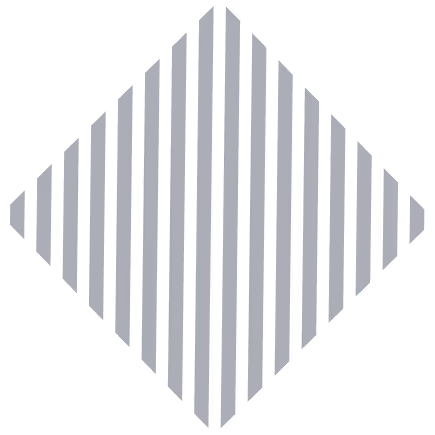AI Recruitment For Remote-First Teams Made Simple and Effective

Hiring for a remote-first team isn’t just about finding the right skills; it’s about cutting through time zones, delays, and busy schedules. Sounds exhausting, right?
That’s where AI recruitment steps in to carry the weight. While your team focuses on real decisions, AI handles the behind-the-scenes grind, screening resumes, scoring candidates, scheduling interviews, and keeping applicants engaged 24/7.
With platforms like HRMLESS, you can build a global team without burning out your hiring managers. It’s fast, fair, and fully automated, giving you better candidates and fewer drop-offs.
In this blog, we will talk about:
- How AI simplifies hiring across time zones for remote-first teams
- Key features that reduce ghosting, bias, and manual work
- Best practices to balance automation and human connection in remote hiring
Let’s dig in and see how AI helps remote hiring feel less like chaos, and more like progress.
Understanding AI Recruitment for Remote-First Teams
AI recruitment is all about using tech to automate hiring tasks. Remote-first teams work mostly or entirely online. Let’s break down what this actually means and how hiring shifts when you go remote.
Defining AI Recruitment
AI recruitment utilizes software to automate tasks such as resume screening, candidate scoring, and interview scheduling. It’s about saving time and reducing errors. With AI tools, you can spot good-fit candidates in a flash. Platforms like ours utilize conversational AI interviews, allowing candidates to engage at any time, eliminating the need for waiting.
AI also helps knock out unconscious bias by focusing on skills and data, not just what’s on a resume. This smart automation enables your team to focus on decisions that matter, rather than paperwork.
What Makes a Team Remote-First?
A remote-first team mostly works from home or wherever there’s WiFi, not in some big office. Team members connect using video calls, chat, and cloud tools. Your hiring process has to fit this setup.
You need people who are comfortable with remote work and possess skills such as self-motivation and digital communication. Remote-first teams love flexibility, which means you can hire from pretty much anywhere. But you’ve got to find folks who can work on their own without much hand-holding.
Key Differences Between Traditional and Remote Hiring
Traditional hiring leans on in-person interviews and local candidates. Remote hiring? It’s all digital, using AI to screen and interview online. When hiring remotely, you care more about soft skills like communication and time management, since no boss is hovering nearby.
AI makes scheduling interviews way easier, eliminating the need for back-and-forth about time zones. Tools like ours invite only engaged candidates to schedule, reducing no-shows. Remote hiring opens up the talent pool worldwide, but you need clear ways to assess skills and culture fit, without ever meeting face-to-face.
Aspect
Traditional Hiring
Remote Hiring
Interview method
Mostly in-person
Mostly digital, AI-assisted
Candidate location
Local or commuting range
Global
Skills focus
Job-specific skills
Soft skills + remote readiness
Scheduling
Manual, local time zones
Automated, flexible
Benefits of AI Recruitment in Remote-First Environments
Remote hiring demands speed and fairness. Automated tools help you find candidates quickly, keep bias low, and keep people interested—no matter where they are.
Faster Talent Sourcing
AI tools scan huge stacks of resumes in minutes. You don’t have to slog through every application; just focus on the best matches. Scheduling interviews gets a lot simpler. Candidates in any time zone can pick what works for them, so there’s less waiting and fewer missed chances.
Our tool automates the screening, scoring, and booking processes. You save hours per hire and cut time-to-hire by more than half. The AI never sleeps so that candidates can interview at any time.
Reducing Bias in Candidate Selection
Manual hiring brings in bias, even if you don’t mean it. AI tools use data-driven scoring for fairer picks. They evaluate skills and experience, rather than age or gender. That means a more diverse group of candidates and better hires.
Decisions become more consistent because AI applies the same rules to everyone. Our tool automates pre-screening and scoring, so you focus on who’s actually best for the job.
Enhanced Candidate Experience
A good candidate experience keeps top talent interested. Automated tools send instant updates and reminders, so candidates don’t drift away. Candidates can interview at their convenience. AI-driven engagement, SMS or email, nudges them to stay on track.
With AI, the whole process feels smoother and faster. Candidates feel valued when you prioritize their time, which reflects positively on your company and helps maintain a strong talent pool.
How AI Tools Facilitate Remote Hiring
AI tools help remote-first teams by handling time zones, speeding up candidate review, and keeping applicants in the loop. You can run interviews any time and keep things moving without more effort. Only the best candidates get through.
Automated Screening and Shortlisting
AI software scans resumes and applications fast, ranking candidates based on your needs. You don’t have to dig through piles of resumes. HRMLESS and similar tools filter out unqualified candidates, giving you a shortlist of top matches.
That means you spend your time on people who matter. You can set your own criteria, so only the right candidates move forward. It’s less bias, less wasted time, more focus on quality.
Virtual Interview Platforms
AI-powered platforms let candidates interview whenever and wherever. They handle scheduling across time zones, so you don’t have to deal with calendar chaos. With our tool, candidates can do AI interviews 24/7.
The system scores answers instantly, so you spot the best fits fast and plan your next steps. No-shows and last-minute rescheduling? Way less of a headache, thanks to automated reminders and self-booking. Hiring just runs smoother, no matter where your team is.
Chatbots for Candidate Engagement
AI chatbots keep candidates in the loop from the start. They answer questions, send updates, and remind people about interviews. Chatbots use SMS or email to nudge candidates, cutting down on ghosting. You don’t have to chase people or send endless follow-ups.
Candidates get a friendly, consistent experience. They feel informed and appreciated, which makes your employer brand look good. You get to focus on what matters, not busywork.
Strategies for Implementing AI in Distributed Teams
AI in hiring helps remote teams save time, avoid mistakes, and keep candidates interested—no matter where they are. You can link AI tools to your systems and tweak workflows to match your team’s style.
Integrating AI Recruitment Platforms
Connect AI tools like ours to your ATS or HR software. Then AI can handle screening, scoring, and scheduling automatically. Integration should be easy, with no downtime. Pick platforms that set up fast and work on any device.
Handy features:
- Automated interview scheduling
- SMS and email reminders
- Real-time analytics for bottlenecks
This saves your team hours and cuts no-shows by inviting only engaged candidates. You get to focus on people, not paperwork.
Customizing Workflows for Remote Processes
Tweak workflows to make AI work for your remote team. Automate early tasks, pre-screening, candidate ranking, to move things along. Set clear rules for when candidates move forward based on AI scores. Utilize AI engagement tools to keep candidates informed, preventing them from being lost to ghosting.
Stay flexible. Remote hiring may require additional steps, such as video interviews or time-zone-friendly scheduling. AI should help, not slow you down. Dashboards enable you to identify delays and maintain smooth operations. You don’t want bottlenecks sneaking up on you.
Challenges Unique to Remote-First AI Recruitment
Remote-first hiring has perks, but it’s not all smooth sailing. You have to balance automation with privacy, keep things personal, and navigate different country rules and cultures. Handling these well makes your process stronger.
Data Privacy and Security Concerns
Remote hiring means handling candidate data across multiple platforms. That’s a security risk. You’re dealing with resumes, emails, interview videos, stuff you don’t want leaked. Follow data protection laws like GDPR or CCPA, depending on where candidates live.
Store data safely, limit access, and delete it when you’re done. Our AI tools encrypt data, but you still need to regularly check your systems and train your team on security best practices. Candidates trust you with their info, don’t blow it.
Maintaining Human Touch
AI speeds up screening and scheduling, but candidates still want to feel like people, not numbers. With no in-person contact, remote hiring can feel cold. Automate the mundane tasks, but maintain personal contact when it matters. Clear, friendly messages and easy ways for candidates to reach out go a long way.
Our tool uses conversational AI for friendly reminders and updates. Voice interviews are coming soon, so candidates can speak naturally. It’s not perfect, but it helps. Balancing speed with honest communication keeps candidates happy and less likely to drop off.
Adapting to Global Talent Markets
Hiring worldwide means juggling time zones, languages, and labor laws. AI tools make scheduling easier, so candidates can interview when it works for them. Still, you must comply with local laws regarding data, work eligibility, and contracts. Some countries have strict rules about AI in hiring. Knowing this saves headaches.
Culture matters too; what works in one country might flop in another. Tweak your AI scripts and messaging for each region. It’s a bit of work, but it pays off. With the right setup, you can tap into global talent without chaos.
Best Practices for Remote-First AI Hiring Success
To get the most out of AI hiring for your remote team, you need clear steps to keep things improving and make sure your team actually uses the tools well. That way, you avoid mistakes, reduce bias, and hire faster—without losing the human touch.
Continuous Improvement Through Feedback
Feedback matters. Ask candidates how their AI interview went. Use surveys or quick polls right after interviews to catch problems before they grow. Hiring managers should share what’s working and what’s not.
Look for patterns, if candidates keep dropping off or scheduling is slow, something’s up. Track numbers like time-to-hire and no-shows. Tools like ours give you real-time analytics so you can tweak settings fast. Small changes now save bigger headaches later.
Training Recruiters and Hiring Managers
Your team needs to get how AI tools work, and what they can’t do. Train them to read AI scores and use their own judgment too. Show recruiters how to manage automated messages and schedules. This keeps candidates engaged and no-shows down. Plus, you don’t want to miss out on good talent by accident.
Keep bias in mind. AI helps, but only if you use it right. Teach your team to spot unfair patterns and fix them. Refreshers help. As tools update, make sure your team stays comfortable using automation to hire smarter.
The Future of AI Recruitment in Remote-First Teams
AI recruitment is revolutionizing the way you hire remote teams. It’s faster, less biased, and helps you find the right people no matter where they live. This tech plugs right into your existing tools, keeping everything running without a hitch.
Emerging Trends in AI Hiring
AI is transforming the hiring process, from more competent candidate matching to around-the-clock automation that keeps everything running smoothly.
- Smarter Language Processing – Modern AI tools understand context and intent, making candidate matching far more accurate than old-school keyword filters.
- Automated Screening and Scheduling – AI takes over repetitive tasks, such as resume screening, scheduling, and reminders, reducing human error and saving valuable recruiter time.
- 24/7 Interview Flexibility – Since AI doesn’t sleep, candidates can complete interviews at any time, improving accessibility, especially for global and remote hiring.
- Automated Scoring and Filtering – Platforms like HRMLESS automatically score and rank applicants, surfacing only the most qualified talent.
- Better Candidate Engagement – Built-in SMS and email nudges keep candidates updated, reducing drop-offs and preventing mid-process ghosting.
AI hiring trends indicate a faster, fairer, and more flexible recruitment process, allowing recruiters to focus on what truly matters: connecting with top talent.
Potential Impact on Global Workforce
AI recruitment cracks open the doors to global talent. No longer limited to local options. Suddenly, you’re considering people with all kinds of skills and backgrounds. AI relies on data instead of gut feelings, which helps reduce bias.
That makes hiring fairer and, honestly, helps you build a team that actually reflects the real world. With ATS integrations, AI slides right into your HR setup. You can juggle hires from around the globe without making things more complicated. Growing a remote team just gets a bit less stressful.
Wrapping It Up
Building a remote-first team doesn’t have to mean slow, stressful hiring. With AI recruitment, you can screen candidates faster, reduce bias, and keep everyone, from recruiters to applicants, on the same page. Platforms like HRMLESS automate scheduling, scoring, and reminders, so your hiring process runs smoothly across time zones. Whether you're scaling quickly or just trying to avoid drop-offs, AI helps you focus on real talent, not repetitive tasks.
The future of remote hiring is faster, fairer, and far less chaotic, with the right tools behind you. Book a demo today and see how HRMLESS helps remote-first teams hire smarter, every step of the way.
Frequently Asked Questions
AI in hiring accelerates screening, scoring, and scheduling processes. It can reduce bias and keep candidates engaged, all while integrating seamlessly with your existing tools.
How can AI enhance talent acquisition for remote teams?
AI handles candidate screening and helps you spot the best fits fast. Since it works around the clock, people can interview whenever they want, wherever they are. You don’t have to waste time on repetitive tasks; AI takes care of that, so you can focus on actually talking to the standouts.
What are the best practices for implementing AI in the hiring process?
Start by plugging AI into your current ATS, so you don’t have to reinvent the wheel. Let it automate pre-screening and scheduling to reduce busywork. Keep candidates informed with quick follow-ups via SMS or email. Check your results frequently and adjust them if something isn’t working.
What are the advantages of using a virtual AI recruiter for remote positions?
A virtual AI recruiter juggles a ton of applicants and doesn’t let details slip through the cracks. Only serious candidates move ahead, so you get fewer no-shows. Hiring moves faster, with less hassle and fewer holdups. The AI interviewer never clocks out, which means you won’t lose great people just because you were slow to respond.
How does AI improve the candidate experience in remote recruitment?
Candidates can conduct interviews at their convenience, eliminating the need to wait for a response. Automated reminders and updates keep them informed. This makes it less likely that people will drop out or ghost you. Fast, clear communication helps your company look good, too.
What tools and platforms can help manage AI-driven recruitment effectively?
Pick platforms that play nice with your ATS, handle automated scheduling, and let you message candidates by SMS and email. HRMLESS, powered by Nerva AI, pulls together screening, scoring, scheduling, and candidate engagement. It really does make remote hiring a lot smoother.
Can AI in recruitment help in reducing unconscious bias in hiring for remote teams?
Yeah, it can. AI tends to stick to the same standards when screening candidates, so it’s less likely to let someone’s personal bias sneak in during those first stages. If you set it up right, AI focuses on what matters, skills and experience, rather than things like gender, age, or where someone comes from. That makes the whole process feel a bit more fair, especially when you’re hiring for remote teams scattered all over the place.
Featured
Subscribe to ournewsletter
Related posts
Explore the world of photography with our curated selection of
portfolio websites that showcase creativity and innovation.





